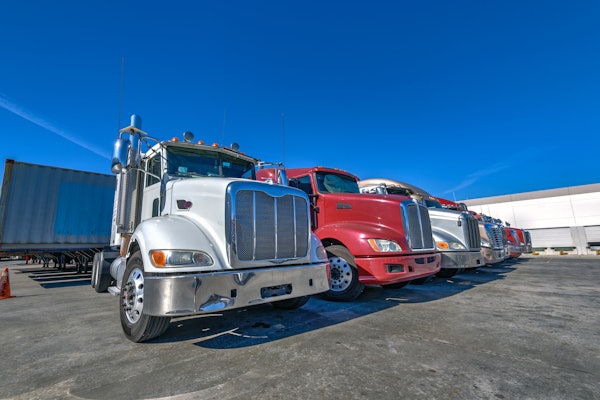Repossessions and liquidations of tractor-trailer trucks rose nearly 8 percent in 2006 compared with 2005, according to Nassau Asset Management’s NasTrac Quarterly Index. The company tracks equipment trends as part of its business providing collections, repossessions and remarketing services to the nation’s leasing and finance industry.
An increase in repossessions is not always negative, says President Edward Castagna, president of Westbury, N.Y.-based Nassau. The NQI — released today, April 20 — may simply reflect an overall increase in financed equipment saturating the marketplace or consolidation, as well as mergers and acquisitions, Castagna says.
But the rise in tractor-trailer repossessions in 2006 seems to signal that another challenging year is ahead for small- to mid-sized trucking businesses — one that could result in even greater numbers of repossessions, Castagna says.
“Truck repossessions and liquidations have been on an upward trend for seven of the past eight quarters, and current conditions indicate this trend will continue,” Castagna says. “Fuel prices are lower than during the spikes in 2005, but still highly unstable. The drop in new home construction is hurting portions of the transportation sector. And there are general economic factors to consider. Problems with the sub-prime mortgage industry, for example, are making it harder for struggling businesses everywhere to squeeze equity from their real estate.”
Fortunately for companies that finance trucks, there is a silver lining, according to Castagna: the current demand for used tractor-trailer vehicles. “Right now, there is a steady market for used trucks,” Castagna says. “It is difficult to predict the future, but we feel the market should remain strong this year and possibly into 2008.”
One reason, Castagna says, is that the 2007 trucks meeting new Environmental Protection Agency diesel engine regulations are just starting to roll off the line; their engines are unproven, cost more to maintain, and are being avoided by buyers for as long as possible. Even though today’s buyers can opt for new 2006 models that are still being sold, Castagna says concerns over the 2007 models also may fuel used truck sales.






